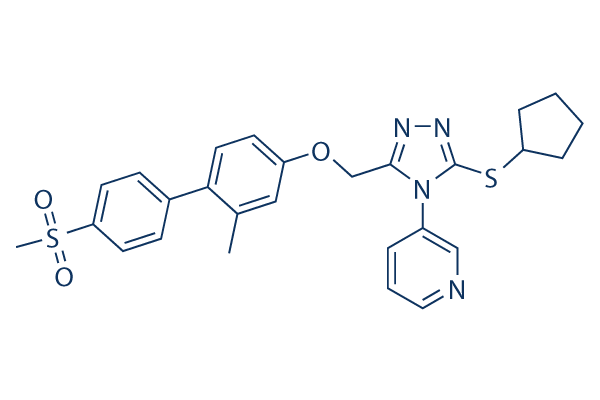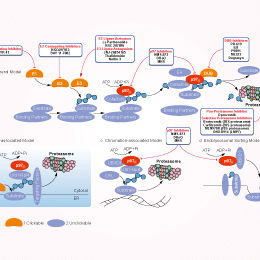
- Bioactive Compounds
- By Signaling Pathways
- PI3K/Akt/mTOR
- Epigenetics
- Methylation
- Immunology & Inflammation
- Protein Tyrosine Kinase
- Angiogenesis
- Apoptosis
- Autophagy
- ER stress & UPR
- JAK/STAT
- MAPK
- Cytoskeletal Signaling
- Cell Cycle
- TGF-beta/Smad
- DNA Damage/DNA Repair
- Compound Libraries
- Popular Compound Libraries
- Customize Library
- Clinical and FDA-approved Related
- Bioactive Compound Libraries
- Inhibitor Related
- Natural Product Related
- Metabolism Related
- Cell Death Related
- By Signaling Pathway
- By Disease
- Anti-infection and Antiviral Related
- Neuronal and Immunology Related
- Fragment and Covalent Related
- FDA-approved Drug Library
- FDA-approved & Passed Phase I Drug Library
- Preclinical/Clinical Compound Library
- Bioactive Compound Library-I
- Bioactive Compound Library-Ⅱ
- Kinase Inhibitor Library
- Express-Pick Library
- Natural Product Library
- Human Endogenous Metabolite Compound Library
- Alkaloid Compound LibraryNew
- Angiogenesis Related compound Library
- Anti-Aging Compound Library
- Anti-alzheimer Disease Compound Library
- Antibiotics compound Library
- Anti-cancer Compound Library
- Anti-cancer Compound Library-Ⅱ
- Anti-cancer Metabolism Compound Library
- Anti-Cardiovascular Disease Compound Library
- Anti-diabetic Compound Library
- Anti-infection Compound Library
- Antioxidant Compound Library
- Anti-parasitic Compound Library
- Antiviral Compound Library
- Apoptosis Compound Library
- Autophagy Compound Library
- Calcium Channel Blocker LibraryNew
- Cambridge Cancer Compound Library
- Carbohydrate Metabolism Compound LibraryNew
- Cell Cycle compound library
- CNS-Penetrant Compound Library
- Covalent Inhibitor Library
- Cytokine Inhibitor LibraryNew
- Cytoskeletal Signaling Pathway Compound Library
- DNA Damage/DNA Repair compound Library
- Drug-like Compound Library
- Endoplasmic Reticulum Stress Compound Library
- Epigenetics Compound Library
- Exosome Secretion Related Compound LibraryNew
- FDA-approved Anticancer Drug LibraryNew
- Ferroptosis Compound Library
- Flavonoid Compound Library
- Fragment Library
- Glutamine Metabolism Compound Library
- Glycolysis Compound Library
- GPCR Compound Library
- Gut Microbial Metabolite Library
- HIF-1 Signaling Pathway Compound Library
- Highly Selective Inhibitor Library
- Histone modification compound library
- HTS Library for Drug Discovery
- Human Hormone Related Compound LibraryNew
- Human Transcription Factor Compound LibraryNew
- Immunology/Inflammation Compound Library
- Inhibitor Library
- Ion Channel Ligand Library
- JAK/STAT compound library
- Lipid Metabolism Compound LibraryNew
- Macrocyclic Compound Library
- MAPK Inhibitor Library
- Medicine Food Homology Compound Library
- Metabolism Compound Library
- Methylation Compound Library
- Mouse Metabolite Compound LibraryNew
- Natural Organic Compound Library
- Neuronal Signaling Compound Library
- NF-κB Signaling Compound Library
- Nucleoside Analogue Library
- Obesity Compound Library
- Oxidative Stress Compound LibraryNew
- Plant Extract Library
- Phenotypic Screening Library
- PI3K/Akt Inhibitor Library
- Protease Inhibitor Library
- Protein-protein Interaction Inhibitor Library
- Pyroptosis Compound Library
- Small Molecule Immuno-Oncology Compound Library
- Mitochondria-Targeted Compound LibraryNew
- Stem Cell Differentiation Compound LibraryNew
- Stem Cell Signaling Compound Library
- Natural Phenol Compound LibraryNew
- Natural Terpenoid Compound LibraryNew
- TGF-beta/Smad compound library
- Traditional Chinese Medicine Library
- Tyrosine Kinase Inhibitor Library
- Ubiquitination Compound Library
-
Cherry Picking
You can personalize your library with chemicals from within Selleck's inventory. Build the right library for your research endeavors by choosing from compounds in all of our available libraries.
Please contact us at [email protected] to customize your library.
You could select:
- Antibodies
- Bioreagents
- qPCR
- 2x SYBR Green qPCR Master Mix
- 2x SYBR Green qPCR Master Mix(Low ROX)
- 2x SYBR Green qPCR Master Mix(High ROX)
- Protein Assay
- Protein A/G Magnetic Beads for IP
- Anti-Flag magnetic beads
- Anti-Flag Affinity Gel
- Anti-Myc magnetic beads
- Anti-HA magnetic beads
- Magnetic Separator
- Poly DYKDDDDK Tag Peptide lyophilized powder
- Protease Inhibitor Cocktail
- Protease Inhibitor Cocktail (EDTA-Free, 100X in DMSO)
- Phosphatase Inhibitor Cocktail (2 Tubes, 100X)
- Cell Biology
- Cell Counting Kit-8 (CCK-8)
- Animal Experiment
- Mouse Direct PCR Kit (For Genotyping)
- New Products
- Contact Us
NMS-873
NMS-873 is an allosteric and specific p97 inhibitor with IC50 of 30 nM that demonstrates potent selectivity for VCP/p97 compared to a panel of other AAA ATPases, Hsp90, and 53 additional analyzed kinases (IC50s >10 μM).

NMS-873 Chemical Structure
CAS No. 1418013-75-8
Purity & Quality Control
Batch:
S728501
DMSO]100 mg/mL]false]Water]Insoluble]false]Ethanol]Insoluble]false
Purity:
99.91%
99.91
NMS-873 Related Products
| Related Products | DBeQ CB-5339 | Click to Expand |
|---|---|---|
| Related Compound Libraries | Kinase Inhibitor Library FDA-approved Drug Library Natural Product Library Bioactive Compound Library-I Highly Selective Inhibitor Library | Click to Expand |
Signaling Pathway
Cell Data
| Cell Lines | Assay Type | Concentration | Incubation Time | Formulation | Activity Description | PMID |
|---|---|---|---|---|---|---|
| Hi5 cells | Function assay | 20 mins | Inhibition of human recombinant His-GST tagged VCP expressed in baculovirus infected Hi5 cells assessed as ADP formation incubated for 20 mins proir to substrate addition measured after 90 mins by NADH coupled assay, IC50=0.024 μM | 23245311 | ||
| HCT116 cells | Cytotoxic assay | 72 h | Cytotoxicity against human HCT116 cells after 72 hrs by luciferase reporter gene assay, IC50=0.38 μM | 71521142 | ||
| Click to View More Cell Line Experimental Data | ||||||
Biological Activity
| Description | NMS-873 is an allosteric and specific p97 inhibitor with IC50 of 30 nM that demonstrates potent selectivity for VCP/p97 compared to a panel of other AAA ATPases, Hsp90, and 53 additional analyzed kinases (IC50s >10 μM). | ||
|---|---|---|---|
| Features | The most potent and specific p97 inhibitor described to date. | ||
| Targets |
|
| In vitro | ||||
| In vitro | NMS-873 reduces p97 sensitivity to trypsin digestion, preventing degradation of the linker-D2 domain. NMS-873, as a p97 inhibitor, produces antiproliferative activity in a variety of hematological and solid tumor lines. The mechanism study indicates that NMS-873 activates the unfolded protein response, interfers with autophagy and thus induces cancer cell death. [1] | |||
|---|---|---|---|---|
| Kinase Assay | Biochemical assay development and HTS | |||
| The ATPase activity and the kinetic parameters of recombinant wild-type VCP and its mutants are evaluated by monitoring ADP formation in the reaction, using a modified NADH-coupled assay. As ADP and NADH are ATP-competitive inhibitors of VCP ATPase activity, the standard protocol for the NADH-coupled assay is modified into a two-step procedure. In the first part, an ATP-regenerating system (40 U/ml pyruvate kinase and 3 mM phosphoenolpyruvate) recycles the ADP produced by VCP activity, keeps the substrate concentration constant (thus preventing product inhibition) and accumulates a stoichiometric amount of pyruvate. In the second part, the VCP enzymatic reaction is quenched with 30 mM EDTA and 250 μM NADH and stoichiometrically oxidized by 40 U/ml lactic dehydrogenase to reduce accumulated pyruvate. The decrease of NADH concentration is measured at 340 nm using a Tecan Safire 2 reader plate. The assay is performed in 96- or 384-well UV plates in a reaction buffer with 50 mM Hepes, pH 7.5, 0.2 mg/mL BSA, 10 mM MgCl2 and 2 mM DTT. Experimental data are fitted with a cooperative equation obtaining a Ks* of about 60 μM and a Hill coefficient (n) of 2.0 ± 0.1. The HTS campaign is performed against a 1-million-compound library using a miniaturized assay in 1,536-well format and a more sensitive ADP detection system, Transcreener ADP FP. A 20-min preincubation of 10 nM VCP and 10 μM inhibitor is performed, after which 10 μM ATP is added to the reaction, which is allowed to proceed for 90 min before quenching. The average Z′ of the screening is 0.58, and the hit rate using 3× s.d. (38% inhibition) as cutoff is 1.7%. Primary hits with >60% inhibition at 10-μM concentration are pruned using physicochemical and structural filters to leave 7,516 compounds. At the end, reconfirmation is performed in duplicate on 3,988 primary hits, and 500 compounds are selected for a dose-response evaluation using the previously described NADH-modified coupled assay. The potency of the most interesting HTS hits is measured against both wild-type VCP and the C522T mutant. ATP concentrations that yielded the half-maximal velocity (Ks*) for each enzyme, corresponding to 60 μM and 130 μM for the wild type and C522T mutant, respectively, are used in the assay. To explore the dependency of reversible inhibitors from substrate concentration, their potency is evaluated also at saturating ATP concentration (1 mM) and compared to the potency of a standard ATP competitive inhibitor (AMP-PNP). | ||||
| Cell Research | Cell lines | A variety of hematological and solid tumor lines | ||
| Concentrations | ~10 μM | |||
| Incubation Time | 72 hours | |||
| Method | Cells are seeded at 1,600 cells per well in 384-well white clear-bottom plates. Twenty-four hours after seeding, cells are treated with the compounds (eight dilution points, in duplicate, for each compound) and incubated for an additional 72 h at 37 °C under a 5% CO2 atmosphere. Cells are then lysed, and the ATP content in each well is determined using a thermostable firefly luciferase–based assay as a measure of cell viability. IC50 values are calculated using the percentage of growth of treated cells versus the untreated control. |
|||
Chemical Information & Solubility
| Molecular Weight | 520.67 | Formula | C27H28N4O3S2 |
| CAS No. | 1418013-75-8 | SDF | Download NMS-873 SDF |
| Smiles | CC1=C(C=CC(=C1)OCC2=NN=C(N2C3=CN=CC=C3)SC4CCCC4)C5=CC=C(C=C5)S(=O)(=O)C | ||
| Storage (From the date of receipt) | |||
|
In vitro |
DMSO : 100 mg/mL ( (192.06 mM) Moisture-absorbing DMSO reduces solubility. Please use fresh DMSO.) Water : Insoluble Ethanol : Insoluble |
Molecular Weight Calculator |
|
In vivo Add solvents to the product individually and in order. |
In vivo Formulation Calculator |
||||
Preparing Stock Solutions
Molarity Calculator
In vivo Formulation Calculator (Clear solution)
Step 1: Enter information below (Recommended: An additional animal making an allowance for loss during the experiment)
mg/kg
g
μL
Step 2: Enter the in vivo formulation (This is only the calculator, not formulation. Please contact us first if there is no in vivo formulation at the solubility Section.)
% DMSO
%
% Tween 80
% ddH2O
%DMSO
%
Calculation results:
Working concentration: mg/ml;
Method for preparing DMSO master liquid: mg drug pre-dissolved in μL DMSO ( Master liquid concentration mg/mL, Please contact us first if the concentration exceeds the DMSO solubility of the batch of drug. )
Method for preparing in vivo formulation: Take μL DMSO master liquid, next addμL PEG300, mix and clarify, next addμL Tween 80, mix and clarify, next add μL ddH2O, mix and clarify.
Method for preparing in vivo formulation: Take μL DMSO master liquid, next add μL Corn oil, mix and clarify.
Note: 1. Please make sure the liquid is clear before adding the next solvent.
2. Be sure to add the solvent(s) in order. You must ensure that the solution obtained, in the previous addition, is a clear solution before proceeding to add the next solvent. Physical methods such
as vortex, ultrasound or hot water bath can be used to aid dissolving.
Tech Support
Answers to questions you may have can be found in the inhibitor handling instructions. Topics include how to prepare stock solutions, how to store inhibitors, and issues that need special attention for cell-based assays and animal experiments.
Tel: +1-832-582-8158 Ext:3
If you have any other enquiries, please leave a message.
* Indicates a Required Field
Tags: buy NMS-873 | NMS-873 supplier | purchase NMS-873 | NMS-873 cost | NMS-873 manufacturer | order NMS-873 | NMS-873 distributor







































